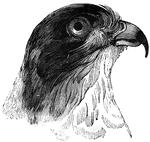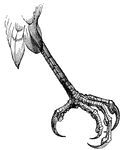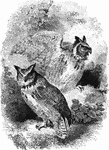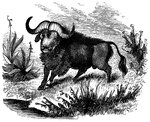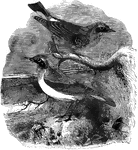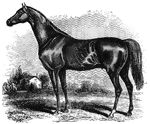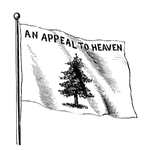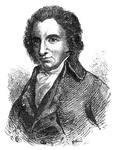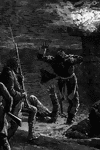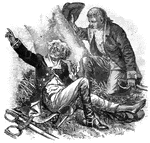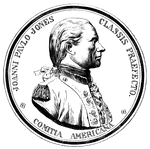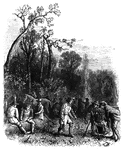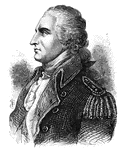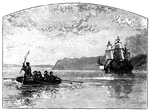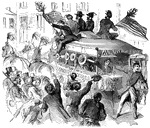
Bucktail Recruit
"Recruiting in Philadelphia, Pa., for the Bucktail Pennsylvania Regiment, August, 1862. This famous…
!["Presentation of colors to the Twentieth United States [African American] Infantry, Colonel Bartram, at the Union League Clubhouse, New York, March 5th, 1864. The Twentieth Regiment, United States [African American] Troops, left Riker's Island at nine o'clock on the 5th of March, 1864, on board the steamer <em>John Romer</em>, and were conveyed to the foot of Twenty-first Street, East River, New York, where they were disembarked and formed in regimental line, and marched to Union Square, arriving in front of the Union League Clubhouse at one o'clock. A vast crowd of citizens, of every shade of color and every phase of social and political life, filled the square and streets, and every door, window, veranda, tree and housetop that commanded a view of the scene was peopled with spectators. Over the entrance of the clubhouse was a large platform, ornamented with flags and filled with ladies. In the street was another platform, tastefully decorated and occupied by prominent citizens. From the stand the colors were presented by President King of Columbia College, who addressed them with warmth and eloquence. After the presentation ceremony was over the men stacked arms and partook of a collation provided for them."— Frank Leslie, 1896](https://etc.usf.edu/clipart/11700/11749/presentcolor_11749_mth.gif)
Presentation of Colors
"Presentation of colors to the Twentieth United States [African American] Infantry, Colonel Bartram,…
!["Capture of Fort De Russy, La., on the 14th of March, 1864, by the Federal forces under General Andrew Jackson Smith. This fort was captured, March 14th, 1864, by the Federal forces under General A. J. Smith. The expedition left Vicksburg on March 10th, landed at Summerville, La., on the 13th, and marched to Bayou Glace, where General Scurri's Confederate brigade had been encamped, which fled on the approach of the transports, leaving considerable camp equipage and commissary stores. General Smith pushed forward to Yellow Bayou, where strong fortifications had been erected; but the Confederates again fled. As he came up the enemy was pressed, and some skirmishing occurred, resulting in the capture of several prisoners and a small wagon train. At daylight the entire command started for Fort de Russy, twenty-eight miles distant, hotly pursued by General Dick Taylor, who hoped to save the fort; but Smith had the lead, and at four o'clock in the afternoon the Third and Ninth Indiana Batteries opened on the fort, which replied vigorously with three of its heaviest guns. The cannonade continued an hour, when General Smith ordered the First and Second illinois Regiments, Sixteenth Corps, under General Mower, to charge the enemy's rifle pits and storm the fort. The Eighty-ninth and One Hundred and Nineteenth Indiana and Twenty-fourth Missouri Regiments charged over deep ditches and a thick abatis in the face of a galling fire, and within twenty minutes after the order was given the [African American] sergeant of the Fifty-eighth Illinois Volunteers planted the American flag upon the enemy's works."— Frank Leslie, 1896](https://etc.usf.edu/clipart/11700/11750/derussy_11750_mth.gif)
Fort de Russy
"Capture of Fort De Russy, La., on the 14th of March, 1864, by the Federal forces under General Andrew…
!["The war in Virginia- contrabands coming into the Federal camp. The [African American] furnishes, in his various phases of existence, wonderful studies for the artist and philosopher. Never, perhaps, has a race seen such a moment as during the Civil War, when the chains of bondage were breaking from the limbs of 4,000,000 of men. The distant roar of battle was to them a sound of deliverance. With all the uncouth, odd and queer manifestations of joy they prepared to reach the camp of the delivering Yanks. Yoking together most incongruous teams before the farm wagons of their fled masters, with ass and ox and horse, with household gear queerly assorted, with useless truck and little that could rarely serve them, they started for the Promised Land, and might often have been seen coming in as our artist, a most close student of nature, depicted them, with his usual felicity of portraiture."— Frank Leslie, 1896](https://etc.usf.edu/clipart/11700/11752/contrabands_11752_mth.gif)
Contrabands
"The war in Virginia- contrabands coming into the Federal camp. The [African American] furnishes, in…
!["The war in Virginia. The Twenty-second [African American] Regiment, Duncan's Brigade, carrying the first line of Confederate works before Petersburg. On the morning of the 15th of June, 1864, General Hinks formed his command in line of battle, and advanced upon the Confederates, with Duncan commanding his right and Holman his left. The result of this charge was waited for with great anxiety. The majority of the whites expected that the [African American] troops would run, but the sable forces astonished everybody by their achievements. With a wild yell that must have struck terror into the hearts of their foes, the Twenty-second and Fifth United States [African American] regiments, commanded by Colonels Kidder and Connor, charged, under a hot fire of musketry and artillery, over the Confederate ditch and parapet, and drove the enemy before them, capturing a large field-piece, and taking entire possession of their works, its defenders, Ferrybee's Fourth North Carolina Cavalry, and Graham's Petersburg Battery, seeking safety in rapid flight, leaving their dead and wounded in the works."— Frank Leslie, 1896](https://etc.usf.edu/clipart/11700/11799/duncan-brig_11799_mth.gif)
Duncan's Brigade
"The war in Virginia. The Twenty-second [African American] Regiment, Duncan's Brigade, carrying the…
!["Siege of Petersburg. The [African American] infantry bringing in captured guns and cheers of the Ohio troops. When the [African American] troops found themselves within the works of the enemy no words could paint their delight. Numbers of them kissed the guns they had captured with extravagant satisfaction, and a feverish anxiety was minfested to get ahead and charge some more of the Confederate works. A number of the [African American] troops were wounded and a few killed in the first charge. A large crowd congregated, with looks of unutterable admiration, about Sergeant Richardson and Corporal Wobey, of the Twenty-second United States [African American] regiment, who had carried the colors of their regiment and been the first men in the works. Our artist gives a sketch of this gallant action."— Frank Leslie, 1896](https://etc.usf.edu/clipart/11800/11801/petersburg_11801_mth.gif)
Siege of Petersburg
"Siege of Petersburg. The [African American] infantry bringing in captured guns and cheers of the Ohio…
!["Assault of the Second Louisiana [African American] Regiment on the Confederate works at Fort Hudson, May 27th, 1863. The Battle of Fort Hudson was a severe and well-fought action. The Federal troops displayed their usual bravery, and were well handled by General Banks, driving the enemy to his second line of works. Of the [African American] regiments General Banks, in his official report, says: 'They answered every expectation. Their conduct was heroic. No troops could be more determined or more daring. They made during the day three charges upon the batteries of the enemy, suffering very heavy losses, and holding their position at nightfall with the other troops on the right of our line. The highest commendation is bestowed upon them by all officers in command on the right. Whatever doubt may have existed heretofore as to the efficiency of organizations of this character, the history of this day proves conclusively to those who were in a condition to observe the conduct of these regiments that the Government will find in this class of troops effective supporters and defenders. The severe test to which they were subjected, and the determined manner with which they encountered the enemy leave upon my mind no doubt of their ultimate success. They require only good officers, commands of limited numbers, and careful discipline to make them excellent soldiers.'"— Frank Leslie, 1896](https://etc.usf.edu/clipart/11800/11805/ft-hudson_11805_mth.gif)
Fort Hudson
"Assault of the Second Louisiana [African American] Regiment on the Confederate works at Fort Hudson,…
!["Siege of Petersburg- the Ninth Corps charging on the enemy's works after the explosion of the mine, July 30th, 1864. Immediately after the explosion of the mine a hundred cannons opened along the Federal front, and at half-past five the Ninth Corps charged, carrying the fort with a part of the line on each side. The Second Division, which was in the centre, advanced and carried the second line a short distance beyond the fort, and rested, holding ground with the utmost determination. It was at the time the [African American] Division, under General White, was pushed forward and ordered to charge and carry the crest of the hill, which would have decided the contest. The troops advanced in good order as far as the first line, where they received a galling fire, which checked them, and although quite a number kept on advancing, the greater number seemed to become utterly demoralized, part taking refuge in the fort, and the remainder running to the rear as fast as possible. They were rallied and again pushed forward, but without success, the greater part of the officers being killed or wounded."— Frank Leslie, 1896](https://etc.usf.edu/clipart/11800/11856/petersburg_11856_mth.gif)
Siege of Petersburg
"Siege of Petersburg- the Ninth Corps charging on the enemy's works after the explosion of the mine,…
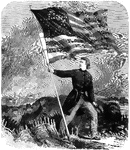
Old Flag
"The old flag again on Sumter- raised (on a temporary staff formed of an oar and boathook) by Captain…

Delaine Merino Sheep
A pair of Delino merinos. They are more suited to be used for mutton, but their wool is of lesser quality…
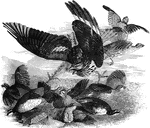
American Marsh Hawk
Also known as the American harrier, the marsh hawk (C. Hudsonius) is nineteen to twenty-one…
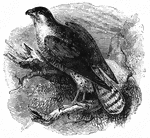
Goshawk
"The American goshawk &mdash the black-cap haw of Wilson &mdash A. atricapillus which has been…
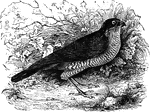
European Sparrowhawk
Resembles the American sparrow-hawk, feeding primarily on small birds and quadrupeds, as well as domesticated…
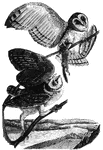
American Barn Owl
A pair of American barn-owls, one of which is grasping a small rodent in its claws.
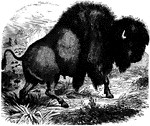
American Bison
"The head is very large and carried low; the eyes are small, black, and piercing; the horns are short,…

Billy Wilson Zouaves
"The ('Billy') Wilson Zouaves, at Tammany Hall, taking the oath of fidelity to the flag, April 24th,…
!["Morning mustering of the 'Contrabands' at Fortress Monroe, on their way to their day's work. As a living illustration of one of the aspects of the Civil War, a sketch is given above of the contrabands, [African Americans], going to their daily work at Fortress Monroe. The variety of the Ethiopian countenance is capitally given, and while some remind us of the merry phiz of George Christy in his sable mood, others wear the ponderous gravity of a New Jersey justice. The [African American] men had a comparatively pleasant time under their state of contraband existence."— Frank Leslie, 1896](https://etc.usf.edu/clipart/12400/12451/mustering_12451_mth.gif)
Morning Mustering
"Morning mustering of the 'Contrabands' at Fortress Monroe, on their way to their day's work. As a living…

Morning Detail
"The morning detail of the Fourth New Hampshire Volunteers going to work on the Hilton Head Fortifications.…
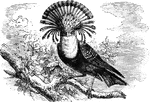
King Flycatcher
An impressive South American species of fly-catcher, with a transverse crest of reddish-fawn feathers.
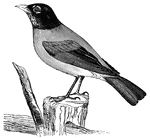
American Robin
The American Robin (known as the migratory thrush among naturalists) feeds on small insects and various…
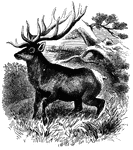
American Elk
"is a large and noble species, resembling the red deer of europe; is has tall, round, branching horns,…
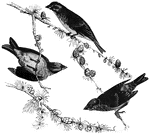
Purple Finch
The purple finch, also known as the American linnet, has a habit of erecting the feathers of its head…
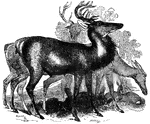
Male American Deer
"It is about the size of the European fallow-deer, and resmebles it in temper and character; the color…
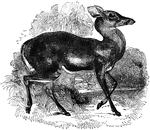
Female American Deer
"It is about the size of the European fallow-deer, and resmebles it in temper and character; the color…
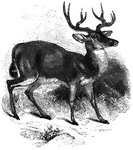
Mule Deer
"Is between the common deer and the American elk in size. Its horns are round and twice forked; the…
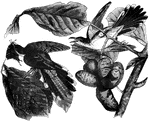
Yellow-billed cuckoo
Also known as the common American cuckoo, the yellow-billed cuckoo subsists on a diet of hairy caterpillars,…

Burning Stamps
"Burning the Stamps in New York, during the opposition of the Stamp Act in 1764."—E. Benjamin Andrews,…
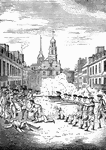
Boston Massacre
"The Boston Massacre, from an engraving by Paul Revere. The Boston Massacre occurred on March 5, 1770."—E.…
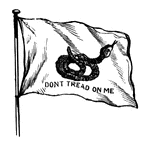
South Carolina flag
"Rattlesnake Flag of South Carolina, during independence of the states."—E. Benjamin Andrews,…

Union Flag
"Union Flag. The first recognized Continental Standard, raised for the first time January 2, 1776."—E.…
Heights of Charlestown
"A profile view of the Heights of Charlestown, in the American Revolution."—E. Benjamin Andrews,…

Bunker Hill Battle
"Bunker Hill Battle, on June 16th, 1775 during the American Revolution."—E. Benjamin Andrews,…
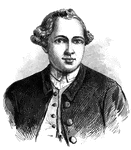
Joseph Warren
"Joseph Warren, of Boston, the idol of Massachusetts, was shot while leaving the redoubt of the Battle…
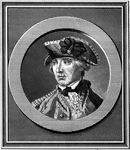
General Howe
"General Howe, commander of the British troops, left Massachusetts on March 17, 1776."—E. Benjamin…
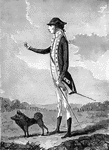
General Charles Lee
"General Charles Lee, an American general in the American Revolution."—E. Benjamin Andrews, 1895
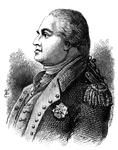
Baron von Steuben
"Baron von Steuben, a trained German soldier, who had been a pupil of Frederick the Great, joined the…
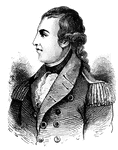
Richard Montgomery
"General Richard Montgomery, an American general from the Northern Campaign."—E. Benjamin Andrews,…
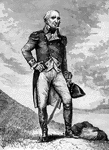
General John Stark
"General John Stark, an American general who fought at Bunker Hill and Trenton."—E. Benjamin Andrews,…
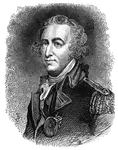
General Horatio Gates
"General Horatio Gates, American general in the American Revolution."—E. Benjamin Andrews, 1895
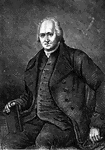
General Lincoln
"General Lincoln, American general from the Southern Campaign during the American Revolution."—E.…
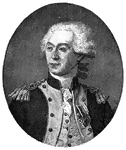
Marquis de Lafeyette
"Marquis de Lafayette, Frenchman who fought during the American Revolution."—E. Benjamin Andrews,…

General Nathaniel Greene
"General Nathaniel Greene, famous American general from the Southern Campaign during the American Revolution."—E.…

